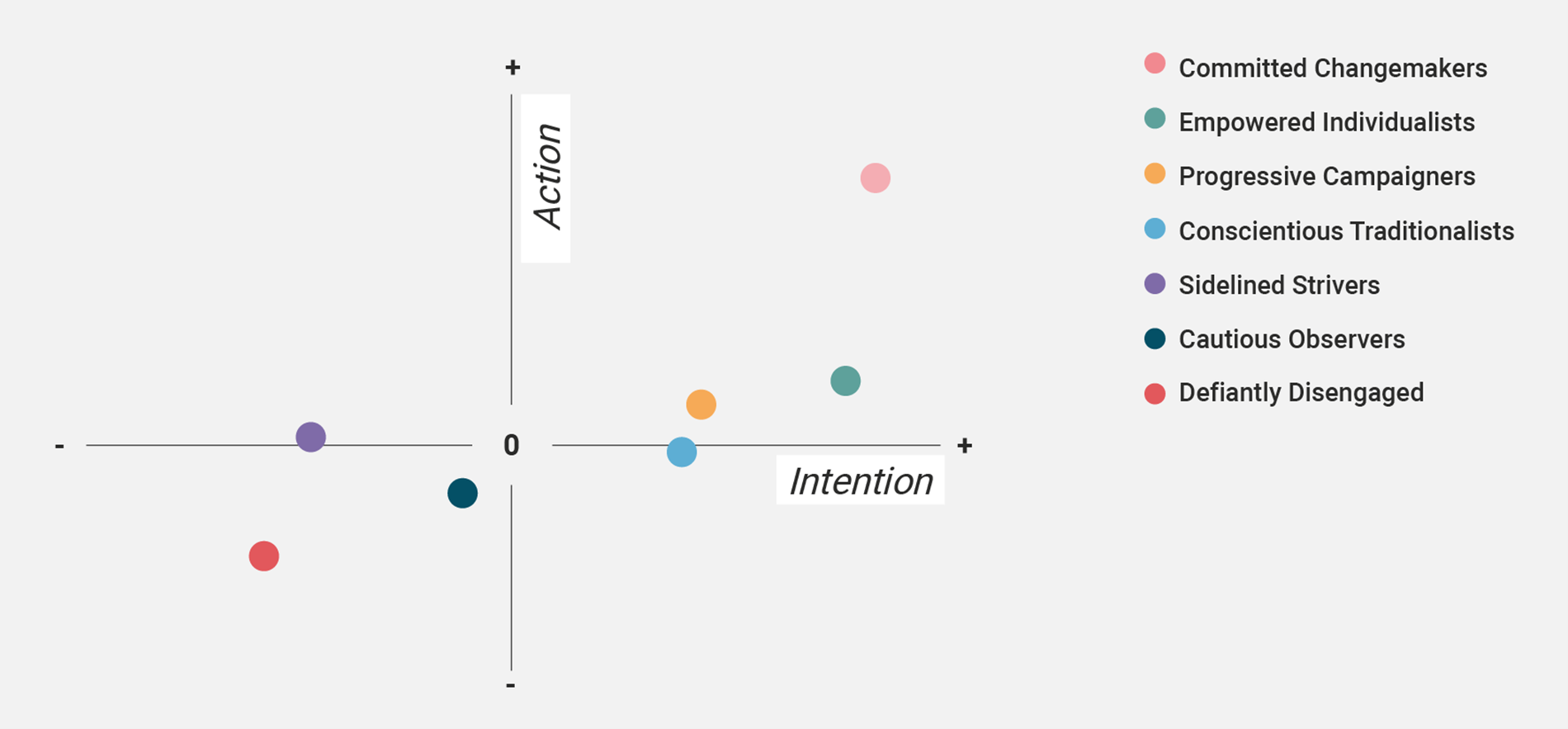Sustainability segmentation: insight for a greener future

As the impacts of climate change grow more extreme, we all know the imperative for sustainable behaviours to be adopted across society, particularly when it comes to consumer choices.
Yet all too often we find ourselves making purchase decisions based on price, familiarity or ease instead of any sustainable consideration. For brands ready to operate in the green economy, this poses a serious marketing challenge – and for the sake of the planet, one that can’t go unanswered.
Understanding green audiences
How well do you know your different consumer segments? Do you really understand who they are today? What drives their behaviour, attitudes and preferences? What makes them tick, especially from a sustainability perspective?
As highlighted in Savanta’s Sustainability Segmentation report, interest in sustainably remains resilient despite the practical and mental squeeze on households and businesses. However, climate change, economic inequality and workers’ rights are key points of concern.
The report assesses the often-complex attitudes consumers in the UK, US and Canada take towards sustainable lifestyle choices. Surveying more than 12,000 respondents, it identifies where consumers and employees sit on the ‘green spectrum’ across different categories and aspects of their lives related to their attitudes, intentions and, crucially, actions.
The aim of the research is to help marketers understand where different audience segments stand on the road to going green – from the most responsive, to those most resistant to change. Identifying seven consumer segments based on their awareness, knowledge, ability to care and behaviours, it gives organisations a working understanding of how to communicate and market sustainability in a manner that directly connects with consumer and customer values.
Introducing our segments:
- Committed Changemakers have a positive, internationalist world view and hold left-leaning values. They’re concerned about sustainability and trust experts’ views but are relatively optimistic about society’s ability to solve problems.
- Empowered Individualists are relatively pessimistic, have right-leaning values and mostly focus their immediate world rather than systemic social change. They tend to be very affluent, so could afford to do more on sustainability if convinced it would benefit them or enhance their lifestyle.
- Progressive Campaigners tend to be relatively younger, middle to upper class with strong egalitarian values, but are distrustful of those with authority. They are outspoken and put their weight behind driving social change but are not taking significant action in their own lives.
- Conscientious Traditionalists tend to belong to the Baby Boomer and Gen X generations, live on middling incomes and have graduate-level education. Characterised by a strong sense of respect and personal responsibility, they show specific concern about climate change and live sustainably.
- Sidelined Strivers are disproportionately young, low-income, and from ethnic minority backgrounds. They are ‘just about managing’ and feel extremely pessimistic about their prospects. The cost-of-living crisis looms large for this group, who therefore have limited opportunities to engage with sustainable behaviours.
- Cautious Observers are relatively less affluent, hold left-leaning values and feel very disgruntled about the direction of society. However, they are sceptical about collective action and expect authority figures to take the lead and offer a helping hand or guidance that will make the world a better place.
- Defiantly Disengaged hold strong right-leaning values, are pessimistic and individualistic, and prefer to ‘go it alone’ than trust experts or established institutions. They’re active rejectors of sustainability, particularly aspects around the responsible and ethical treatment of workers and promoting values of equality.
Why eco segmentations have value
There are numerous ways organisations can make better decisions in the face of uncertainty utilising an eco-segmentation. There are three ways they can drive change.
Firstly, understanding your audience in a changing landscape. Our research found that two in five ( 41%) consumers are concerned about climate change, with this figure representing individuals with a variety of motivations, capabilities and opportunities to live more sustainably.
By plotting sustainable intentions against real-world behaviours – representing the infamous ‘say-do’ gap – and overlaying the analysis with socio-political values and personality traits, brands are able to identify a much-needed holistic view of the various capabilities, motivations and opportunities of different types of consumers.

The second is inspiring and communicating compelling propositions. Consumers and society at large all need to move from seeing sustainable lifestyles as a sacrifice (financial, or otherwise) to seeing it as a shared benefit, and from premium to mass market. Businesses have a vital role in understanding consumer attitudes to enable them to create new greener propositions that will facilitate this transition.
The final aspect is driving meaningful change, bottom-up and top-down. No matter how compelling the proposition, consumers will still need persuading to adopt lower carbon lifestyles. There is a need to understand behaviour by shedding light on what people think but also how people think. Change is already happening as seen in leading brands developing ambitious sustainability initiatives.
Nick Baker is chief research officer at Savanta.
The Insight Climate Collective is running an event on the eco-segmentations above at 60 Great Portland Street on Thursday 2nd March from 6.00pm onwards. Please click here for more information.

We hope you enjoyed this article.
Research Live is published by MRS.
The Market Research Society (MRS) exists to promote and protect the research sector, showcasing how research delivers impact for businesses and government.
Members of MRS enjoy many benefits including tailoured policy guidance, discounts on training and conferences, and access to member-only content.
For example, there's an archive of winning case studies from over a decade of MRS Awards.
Find out more about the benefits of joining MRS here.












0 Comments